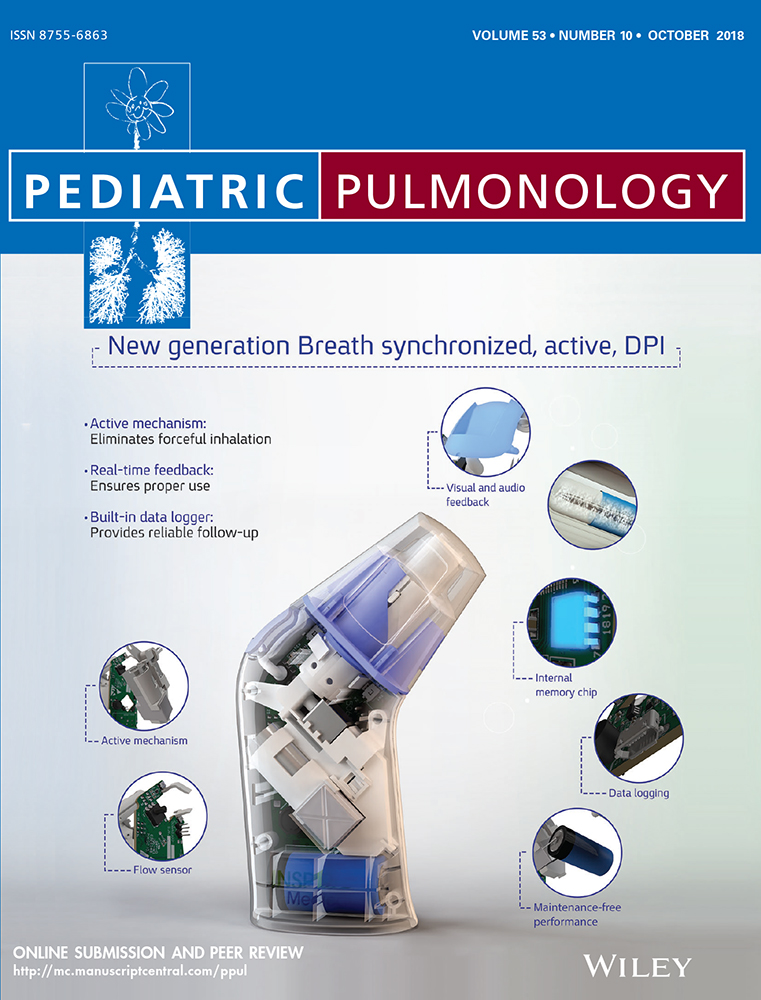Sleep disordered breathing and ventilatory support in children with Down syndrome
Abstract
Study Objectives
Obstructive sleep apnoea (OSAS) in children with Down syndrome (DS) is now well recognized, but other forms of sleep disordered breathing (SDB) in this population are less well described. Anecdotally, respiratory support for SDB treatment in this population is not easily tolerated. We aimed to characterize the types of SDB in children with DS referred to a tertiary respiratory center and to assess the effectiveness and adherence to respiratory support.
Methods
Retrospective study of DS patients <18 years old under follow-up at a tertiary respiratory center. Anthropometrics, comorbidities, sleep study results, and details of respiratory support were collected. Satisfactory adherence to oxygen (O2), Continuous Positive Airway Pressure (CPAP), or bilevel noninvasive ventilation (NIV) was defined as use >4 h/night for >50% nights.
Results
Sixty patients were included, median age 1.5 (0.7-5.3) years; 49 (82%) had congenital heart disease, 16 (27%) pulmonary hypertension, 28 (47%) gastroesophageal reflux, 38 (63%) swallowing impairment; 16/17 who underwent CT scanning had evidence of aspiration. Forty-two had SDB: 27 (61%) OSAS (10 mild, 5 moderate, 12 severe), 11 (25%) central apnoeas, 19 (32%) nocturnal hypoventilation. Twenty-six had baseline saturations <95%. Lower SpO2 correlated with pulmonary hypertension (r2 = 0.1, P = 0.04). Thirty-nine (65%) patients started respiratory support (14 O2, 18 CPAP, 7 NIV) and 22 (56%) have regularly used it. After a 1.9 years follow up 11/24 had satisfactory adherence to CPAP/NIV (average use 8 h/night).
Conclusions
Our results confirm the high prevalence of OSAS in children with DS. A significant number also have low baseline saturations, central apnoeas, and nocturnal hypoventilation. Contrary to popular belief, more than half of children with DS had satisfactory adherence to respiratory support.
CONFLICTS OF INTEREST
The authors have no conflicts of interest relevant to this article to disclose.




